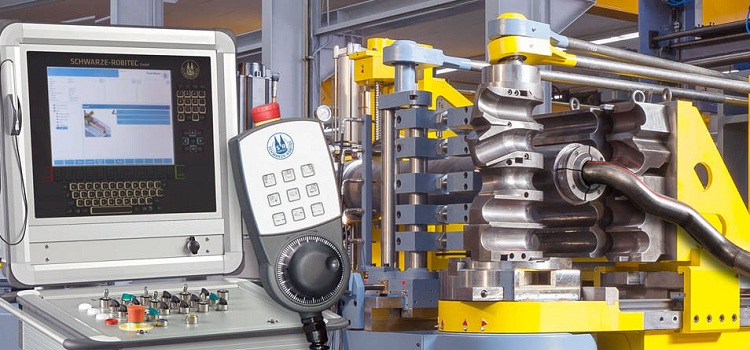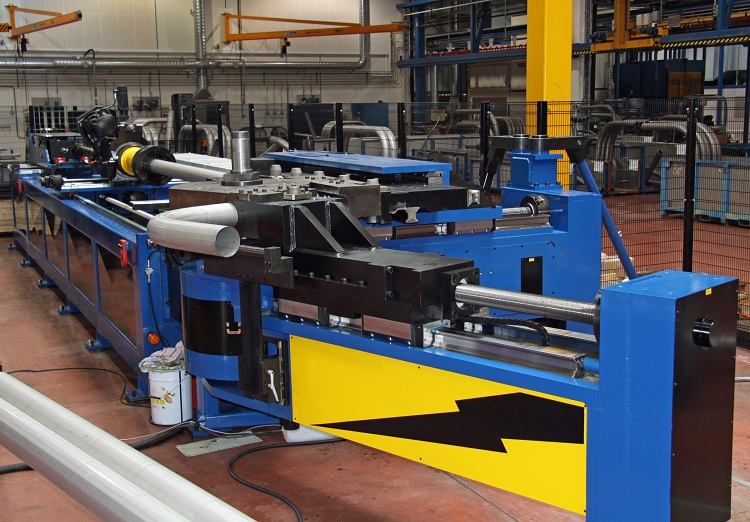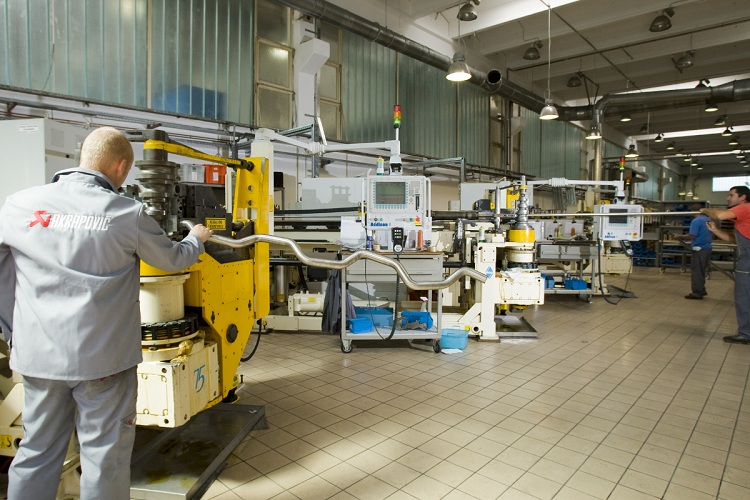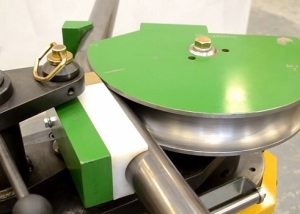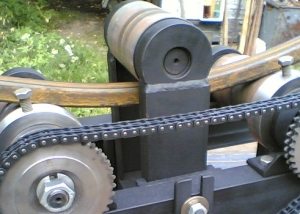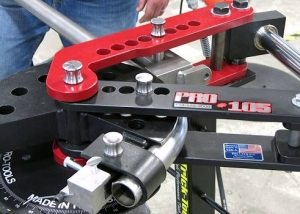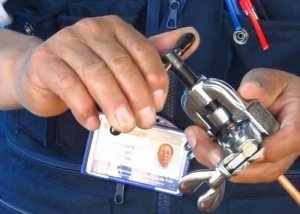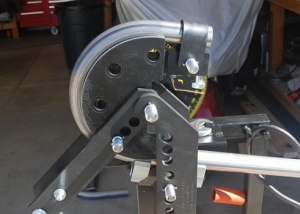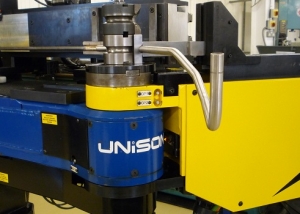When creating pipelines or supporting structures, it is often necessary to organize rotary parts without reducing the quality of installation and increasing the risk of creating emergency sections. The strength properties of the segment fastened by fittings will differ for the worse from the properties of a monolithic pipe. To create bends, pipe processing technology is used, which in industrial conditions is carried out using special equipment - automatic pipe benders.
Content
CNC pipe bender: semi-automatic and automatic models
Numerical control (or CNC) began to be installed on semi-automatic or automatic models of pipe benders relatively recently. Using these systems, pipe bending has become more accurate and less costly in terms of time resources. CNC complexes are not installed on manual models of tools for bending pipes.
Semi-automatic pipe bending machine with CNC can be called the most common type of equipment (not including manual pipe benders). This machine is called semi-automatic because a certain part of the operations is carried out by the software part of the equipment, while the rest of the actions will be performed by the machine operator. The process of bending pipes is fully automated - the most complex work requiring high accuracy and quality. But the work of the machine involves constant monitoring.
Note! The use of a semi-automatic CNC pipe bender is justified for small enterprises that do not require very high production and productivity standards.
If average indicators are not enough, then the use of automatic machines with a program control system is recommended: they are much more functional. With their help, it is possible to create an individual project for executing an operation, scrolling it in “demo mode” before executing it directly.
A semi-automatic CNC pipe bender is also successfully used when it is necessary to bend thin-walled pipes: however, models equipped with a mandrel (a special stabilizing element in the form of a metal spring, sometimes coated with polyurethane) should be chosen for this. Abyssless machines do a rather poor job of eliminating the corrugation of a thin-walled pipe resulting from bending. Also, rootless machines have the likelihood of an ovality of a thin-walled pipe during bending. Some ovality is also possible when using a mandrel pipe bender, however, a deviation from the norm will reach only a few percent, which is safe for further operation.
CNC pipe bending machine: what are the advantages?
Modern automatic and semi-automatic units, which are controlled by software, have the most significant advantage over obsolete models - this is the claim accuracy of bending, up to tenths of a degree of angle. The required accuracy is determined not "by eye", but displayed on a special built-in console with a sensor.In recent years, advanced models have appeared on the market in which the software sensor is able not only to set the angle of bending, but also to display data on the elasticity of the metals that are being worked on.
Important! This is not to say that the possibility of a pipe bender with a system for determining the parameters of springing metals is of particular value in the conditions of using domestic pipes. When displaying elasticity data, the regional characteristics of pipe production are not taken into account at all.
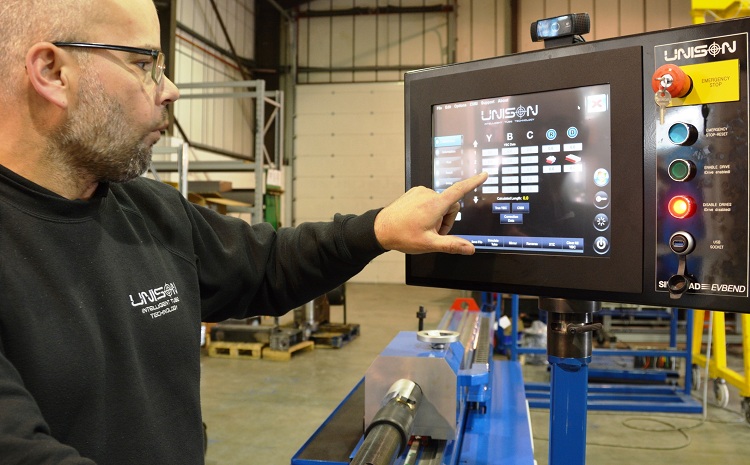
Computer devices are equipped with displays that display the specified parameters, technical data of the processed workpieces and other important information
Speaking of numerically controlled bottomless pipe benders, one can not help but mention their lightness. These machines are quite mobile, their weight rarely exceeds 250 kg. Also, bottomless pipe bending equipment is often equipped with rubber wheels, which makes it possible to move the machine around the workshop. Dorn equipment is, as a rule, heavy stationary machines.
Techniques for working with pipe bending equipment
The process of bending pipes on machines with a numerical control system can be carried out by several methods. Often there are installations on which work is carried out by winding. As a rule, such equipment is equipped with mandrels. The bending process is simple: the pipe is firmly pressed against the bending roller, which by rotation “wraps” it around itself. Winding occurs until the desired bending angle is reached.
A CNC coreless pipe bender typically operates on a pipe break-in system. The product is mounted between two rollers: one of them is run-in, the other is motionless. When the device is turned on, the break-in roller begins to move around the stationary one, as a result of which the pipe is pressed closer to it. Thanks to this, the product receives a given shape, defined by the radius of the stationary roller. On bottomless pipe benders, work is usually done with inch water and gas pipes, as well as construction profiles that have fairly thick walls.
Bending can also be done by rolling or extrusion. In the first case, the design has the appearance of a crossbow. In the second case, we are talking about pipe benders equipped with three rollers, two of which are placed on the same line.
The necessary type of equipment, a semi-automatic or automatic pipe bender, is selected depending on the needs of a particular enterprise. The same factor also affects the choice of a mandrel or rootless machine. One way or another, the program control system has made the use of any equipment more comfortable and faster.
